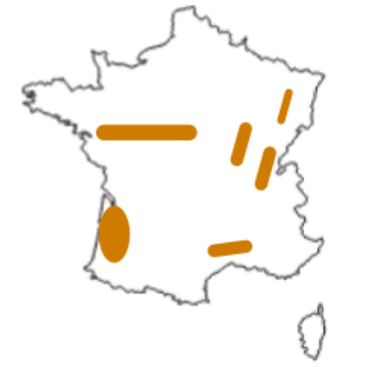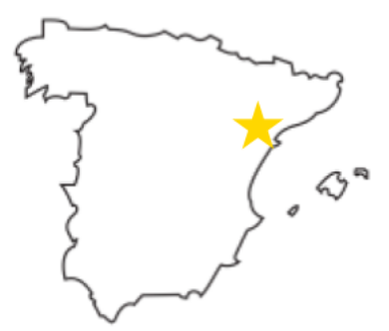|
Sparkling wine, the true holiday hero; it’s there from your festive morning mimosa, to the celebrational pop at the end of a dinner. It’s loved by the avid wine drinkers to the beginners, and is a great way to bring people together. In the spirit of the holidays, let’s dive into the world of sparkling wine! HOW SPARKLING WINE IS MADE I love a good teachable moment, so let’s start by talking about how it’s made. Regular (or still) wine is made using this process called fermentation. During this process yeast (either added to grape juice, or existing naturally) consumes sugar from the grapes and produces alcohol and carbon dioxide. When making still wine, the carbon dioxide is simply released into the atmosphere. Sparkling wine goes through this same process that still wine does. But then...more sugar and yeast are added to the product of the first fermentation forcing the wine to go through a second fermentation! During this second fermentation, the carbon dioxide is trapped and results in bubbles in the wine! HOW SPARKLING WINE WAS FOUNDED Now that you know how sparkling wine is made, I can tell you about how it was founded. I say founded specifically because it’s one of those things that was a result of a happy accident and not purposely created. It was believed for the longest time that the French Monk, Dom Perignon, invented sparkling wine in 1697. However, studies and evidence have shown that it was actually discovered/invented by Benedictine monks in the Abbey of Saint-Hilaire, near Carcassonne (France) in 1531. No matter who it was that made it, the story is the same for how it was first discovered. Happy Accident:
Sparkling wine was initially something to avoid, because once one bottle would burst from the pressure, it would cause a ripple effect and cellars would lose 20–90% of their bottles. Those who worked in the cellars would wear a heavy iron mask (similar to a baseball catcher's mask) to prevent injury from spontaneously bursting bottles. It was also called the "devil’s wine", both because it caused destruction, and because of the mysterious circumstance surrounding the then unknown process of fermentation and carbonic gas. Sparkling wine has come a long way, and is now consumed all over the world! And in honor of the holiday season, I have the perfect six that you should try: CHAMPAGNE  First up, Champagne. The mightiest of the mighty. The king of all sparkling wines. Champagne is sparkling wine from the Champagne region of France. You can see that part highlighted in red. It’s made with Chardonnay, Pinot Noir, and Pinot Meunier. Not all have to be present in every Champagne, but only those three grapes can be in Champagne. Champagne can typically be found in the $30-$70 price range, with of course, bottles in the hundreds, and thousands of dollars as well. One thing that makes Champagne special is even the cheapest ones have to spend a legal minimum of 12 months aging and developing flavor. This results in delicious flavors of toasted bread, biscuit, and cream. Others believe the chalky soil in Champagne gives this wine a special flavor that no other region can achieve. Of course, a lot of prestige is also simply due to name value. Whenever anyone thinks of fancy wine, they think of Champagne. Other flavors found in Champagne include lemon, yellow apple, and toasted almonds. CREMANT  Now if you’re looking for a tasty bottle of sparkling wine, but in a more reasonable budget (within the $10-$30 range), I’d highly recommend a Crémant. Crémant is a style of sparkling wine made with the same technique as Champagne, but from outside the Champagne region. They’re typically named after the region in France they come from. The region they’re from also determines the grapes that are used in the wine. For example, Cremant de Bourgougne is made just south of Champagne in Burgundy and uses the same Pinot Noir and Chardonnay grapes. One of my favorites is Cremant de Jura. This region is southwest of Champagne and typically uses Chardonnay in it’s sparkling wine. Crémant de Limoux is a sparkling wine from the Languedoc, where sparkling wine was believed to be founded. Dom Perignon supposedly made a pilgrimage to the monks at Saint Abbey in the Languedoc to learn how to make sparkling wine. Flavors differ depending on the region, but can include white cherry, lemon, white apricot, toasted bread and almonds. Grapes:
CAVA  Next up - my favorite budget sparkler: Cava. Most Cava comes from the Catalonia region in north east Spain near Barcelona, though it can be made anywhere in Spain. These wines are typically made with local Spanish grapes: Macabeo, Parellada, Xarello. However, Chardonnay and Pinot Noir can also be used. These wines are perfect for the pocket book as I’ve had great Cava for under $10. And some of the best Cava I’ve had (i.e the Cava I served at my wedding) was just $15 a bottle. These wines tend to be more fruity and floral than Champagne, but just as flavorful. Common flavors include lime, quince, apple, almond, and chamomile. PROSECCO  If we’re talking about sparkling wine, we certainly can’t leave out Prosecco. Prosecco has a really interesting history that I love talking about any chance I get. So, we all know now that Champagne is sparkling wine specifically from the Champagne region in France, right? Well, Prosecco is NOW a sparkling wine specifically from the Prosecco region in Italy. However, it wasn’t always that way. In fact, the grape used to make the wine was once called Prosecco. However, because of this, Italy had no way of keeping Prosecco special in the same way Champagne did. Anyone, anywhere could make sparkling wine made with the Prosecco grape and call it Prosecco. And people did just that. Italians had enough of this, and decided to do something to keep the Prosecco name to themselves. They found a small town in the region where they were making Prosecco that was actually called Prosecco. They then drew a region around that town that included all the vineyards and requested the entire region be called Prosecco. Then they convinced everyone the grape was actually called Glera, not Prosecco. Once the region was approved, no one else in any other part of the world could sell a sparkling wine and call it Prosecco. Prosecco is very different from Champagne in it’s flavors. It has far more citrus, and tree fruit, with a bit of tropical as well. There is a tad bit of cream, but normally the fruit wins out. Bottles of Prosecco usually fit in the $8-$20 range and are the perfect sparkling wine for cocktails. DOMESTIC SPARKLING  Since I’m living in the US, we ought to talk about Domestic Sparkling, or American Sparkling wine. The flavors range, but in general, US sparkling wines can have flavors of pineapple, white flowers, peach, pie crust and lemon. Most sparkling wine in the US comes from California and Oregon, but plenty of states are giving it a try. Many states that are usually too cold for other wines can make great sparkling wine. This is because colder regions produce wines with high acidity. And high acidity is exactly what you need for a good sparkling wine. LAMBRUSCO  And finally, let’s talk about Lambrusco. Lambrusco to many people is just that cheap, sweet red wine that tastes like soda. And admittedly, I felt that way too for a while. That is, until I was introduced to some really great Lambrusco. Its reputation is changing and some incredible producers are making some really high quality stuff. So, let’s get into what exactly Lambrusco is. Lambrusco is actually a family of very old grape varieties native to Italy, thus most of the wines are a blend of many different distinct grapes. The majority of Lambrusco production occurs in Emilia-Romagna (also known for its Parmesan-Reggiano). Lambruscos range in sweetness from dry to super sweet. The best are typically dry (secco) and barely sweet (semisecco). Lambrusco tends to show flavors of cherries, strawberries, blackberry jam, violets, citrus zest and potting soil. To learn even more about sparkling wine, book a private virtual sparkling wine tasting with me here! Whether you’re looking to learn more history, or simply want to gift your friends or family with a unique tasting experience, this is the perfect option.
Happy Holidays!
2 Comments
11/28/2022 10:01:34 am
Thank you for explaining how prosecco is a great sparkling wine to use for cocktails. I'm trying out some different drinks to make for our parties this year. I'll be sure to look for some recipes to try to see if we should make some cocktails with prosecco this year.
Reply
Hailey, Cork & Fizz
1/12/2023 05:52:21 pm
Absolutely! Prosecco is the perfect sparkling wine for cocktails, it’s got a light and fresh taste with great bubbles. I’m a fan of cranberry mimosas myself!
Reply
Leave a Reply. |
Topics
All
|


 RSS Feed
RSS Feed